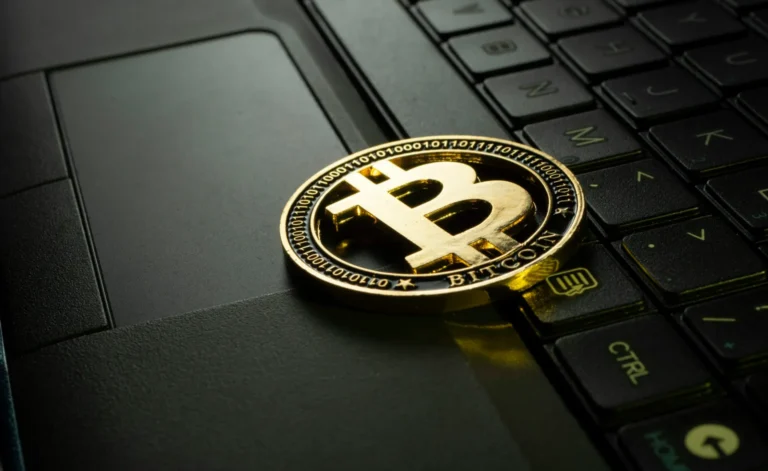
The cryptocurrency market is no stranger to rumors and myths, and one that has recently gained traction is the concept of a Bitcoin exchange supply shock. For some time, analysts and enthusiasts have speculated that Bitcoin’s supply on exchanges was rapidly depleting, which could trigger a massive price surge due to demand outpacing supply.
However, in a recent report, Glassnode, a prominent on-chain data provider, has shattered this narrative, revealing that the supply shock myth surrounding Bitcoin’s exchange balances may not be as real as many thought.
Understanding the Bitcoin Supply Shock Myth
The Bitcoin exchange supply shock theory has its roots in the idea that as institutional adoption and retail investor interest in Bitcoin increase, a significant portion of Bitcoin would be pulled off exchanges for long-term holding. This, in turn, would reduce the circulating supply on exchanges, causing supply-demand imbalances that could push prices to new highs.
Supporters of this theory pointed to a trend of Bitcoin leaving exchanges, suggesting that this shift in holdings was a precursor to a bull market. The belief was that fewer available coins on exchanges would force buyers to bid higher to secure Bitcoin, ultimately causing a price surge.
Key Factors in the Supply Shock Argument:
- Reduced Bitcoin on Exchanges: A drop in Bitcoin on exchanges implies that fewer coins are available for trade.
- Long-Term Holding: A large portion of Bitcoin being moved into cold storage by institutional investors suggests a long-term bullish outlook, further reducing immediate selling pressure.
- Increased Demand: As demand for Bitcoin grows, the idea is that its limited supply on exchanges would trigger price appreciation.
Despite the logic behind these ideas, Glassnode’s analysis challenges the validity of this theory, providing data that refutes the idea of an imminent supply shock.
Glassnode’s Data Analysis: No Supply Shock, Just Normal Fluctuations
In its analysis, Glassnode evaluated Bitcoin’s exchange balances over time and found that the drop in available Bitcoin on exchanges was not as dramatic as previously suggested. While Bitcoin holdings on exchanges did show a general decline, the decrease was not enough to support the notion of a supply crisis.
Key Findings from Glassnode’s Report:
- Fluctuating Exchange Reserves: Glassnode observed that Bitcoin’s reserves on exchanges have been fluctuating regularly, meaning that any decrease in supply was balanced by periodic increases. This points to a more dynamic and natural flow of Bitcoin in and out of exchanges, rather than a sustained shock in supply.
- Institutional Activity Is Not as Impactful as Expected: While institutional investors like MicroStrategy and Tesla have indeed accumulated large amounts of Bitcoin, Glassnode suggests that their activity has not caused a drastic supply reduction across exchanges. Instead, institutional buying may have shifted coins into private wallets, but this has not equated to a permanent supply shock.
- Increased Exchange Activity: Glassnode’s data also showed that exchange activity, including trading volumes, has remained relatively consistent. This further debunks the theory of a mass exodus of Bitcoin from exchanges and suggests that exchanges still hold a stable supply of Bitcoin available for trading.
- On-Chain Indicators: Additional on-chain metrics, such as the exchange inflow and outflow ratio, pointed to healthy market dynamics, with enough Bitcoin circulating in the system to meet market demand.
Does This Mean Bitcoin Prices Won’t Surge?
While Glassnode’s report challenges the idea of a supply shock, it doesn’t rule out the possibility of price increases due to other market factors. The demand for Bitcoin remains high, particularly as institutional adoption continues to rise. However, the price of Bitcoin will likely be driven by other variables such as market sentiment, macroeconomic factors, and global regulatory changes, rather than by a dramatic shortage of supply.
Moreover, as Bitcoin’s liquidity remains relatively healthy, the possibility of a price surge due to a supply shock is less likely. Instead, Bitcoin’s price may continue to experience organic growth fueled by increased demand and adoption, rather than by the scarcity narrative.
Implications for Investors
For investors, Glassnode’s findings serve as an important reminder that the cryptocurrency market is complex and that popular narratives don’t always align with the underlying data. While the idea of a Bitcoin exchange supply shock may have been enticing for some, it’s essential to approach such theories with caution and evaluate the full scope of market dynamics.
Key Takeaways for Investors:
- Bitcoin Supply on Exchanges Is More Dynamic: Rather than a sudden and drastic drop in supply, Bitcoin’s flow in and out of exchanges remains natural and typical of a healthy market.
- Demand for Bitcoin Still Strong: While there may not be a supply shock, demand for Bitcoin continues to rise, and factors like institutional adoption and inflation hedging are pushing the asset’s value higher.
- Market Sentiment Matters: Price movements will likely be influenced more by macro trends, economic uncertainty, and regulatory developments than by simple supply shortages.
Conclusion
Glassnode’s analysis provides a reality check on the Bitcoin exchange supply shock theory, highlighting that the fluctuations in Bitcoin’s reserves on exchanges are part of the normal ebb and flow of market activity. While the idea of a supply crisis may have captured the imagination of many, the data doesn’t support the notion of an immediate shortage.
For Bitcoin investors, this insight is a crucial reminder that the market is far more nuanced than single narratives suggest. The path to higher Bitcoin prices will likely depend on demand, adoption, and macro factors, rather than on a sudden and dramatic supply shock.
As the market evolves, investors should stay informed and focus on the broader factors that are shaping Bitcoin’s future trajectory.





